Discover enchanting tourist spots in Southern Rajasthan, including Udaipur, Kumbhalgarh, Chittorgarh and wildlife sanctuaries. Uncover rich history, vibrant culture, and stunning landscapes! Each turn reveals a new story, and the beautiful buildings reflect its royal past. Also, know the distance between place, shopping tips and what to carry on this adventure.
Khamma Ghani! Welcome to Southern Rajasthan, a land bursting with vibrant culture, stunning landscapes, and rich history! From the sparkling lakes of Udaipur to the grand forts of Chittorgarh, every place has something exciting to offer.
As you wander through this beautiful area, you will discover not only lively festivals but also tasty food. Moreover, you’ll meet friendly locals who are eager to share their stories. So, get ready to dive into the beauty and magic of Southern Rajasthan!
1. Udaipur: The City of Lakes
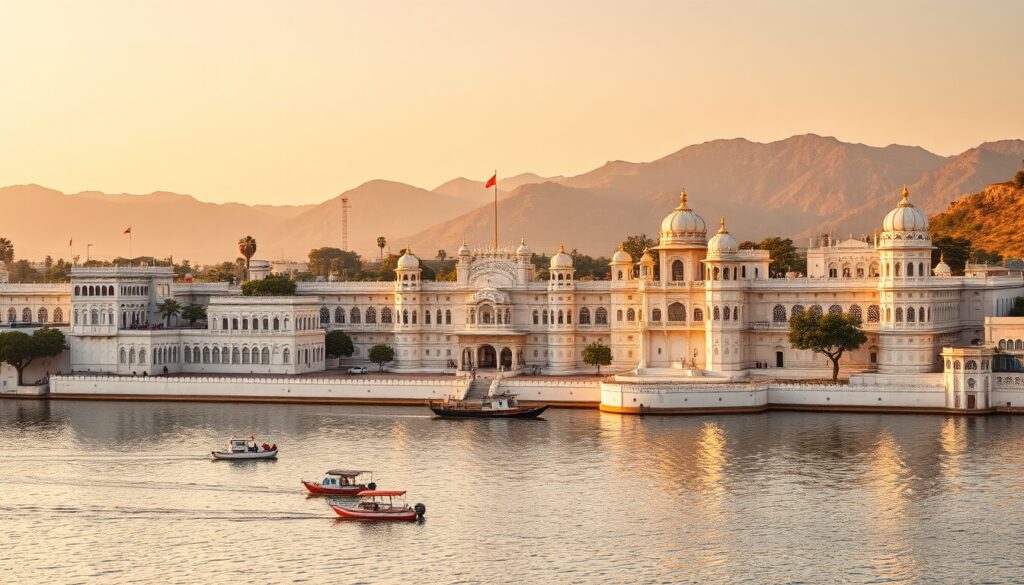
Distance: Udaipur is about 60 km from Kumbhalgarh and 120 km from Chittorgarh.
How to Commute: You can easily hire a taxi or take a bus for a smooth ride! Additionally, Udaipur is well-connected by train and plane.
Udaipur, known as the “City of Lakes,” captivates visitors with its romantic ambiance. The city has a rich royal heritage. The City Palace, located in the city’s heart, showcases a blend of Rajasthani and Mughal architecture. Jag Mandir is an island palace on Lake Pichola, enchanting visitors with its beautiful gardens and intricate architecture. Visitors should not miss a boat ride on Lake Pichola, especially magical at sunset, offering breathtaking views.
Cultural Significance
Udaipur serves as a cultural hub for Rajasthani traditions. It celebrates dance, music, and festivals. The Mewar Festival marks the arrival of the monsoon and highlights Udaipur’s vibrant spirit. Sakhion Ki Bari is a serene garden that attracts both locals and tourists, featuring intricate fountains. Bagore Ki Haveli is a historical mansion turned museum, offering nightly cultural performances, including traditional puppet shows that share local folklore. The Sawaria Seth Temple, dedicated to Lord Krishna, stands out as a spiritual site where devotees seek blessings and engage in vibrant celebrations.
Historical Significance
Maharana Udai Singh II founded Udaipur in 1559 as the capital of the Mewar Kingdom. The city’s palaces and forts reflect the valor and architectural skill of the Rajputs. Additionally, Udaipur boasts famous puppet shows that narrate local legends through beautifully crafted puppets.
Shopping Essentials
Look for colorful handicrafts and jewelry. Explore street markets for great deals, as you can often find the same quality items at a lower price compared to expensive stores and emporiums!
What to Pack
Be sure to bring your camera, a refillable water bottle, and comfy shoes for exploring.
2. Kumbhalgarh Fort: A UNESCO Heritage Site
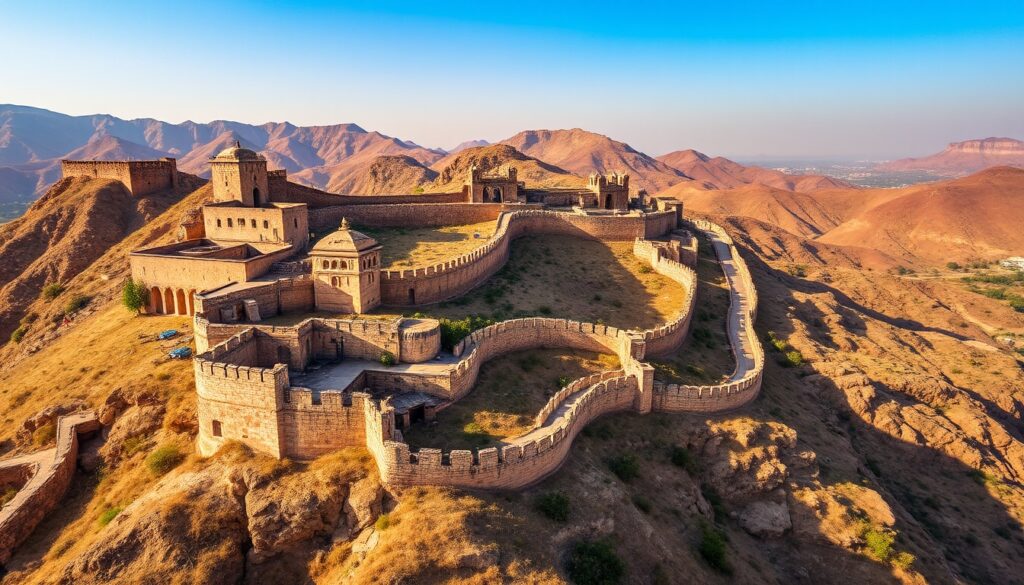
Distance: About 85 km from Udaipur and 50 km from Ranakpur.
How to Commute: You can take a bus or taxi—it’s an easy trip!
Kumbhalgarh Fort, a UNESCO World Heritage Site, impresses with its remarkable fortifications that stretch over 36 kilometers, making it one of the longest walls in the world. The fort houses several palaces, temples, and gardens, where visitors enjoy stunning panoramic views of the Aravalli hills, especially during sunrise and sunset. The evening sound and light show captivates audiences with insights into the fort’s history.
Cultural Significance
Locals celebrate Kumbhalgarh in folklore, symbolizing Rajput pride and resilience. Festivals and cultural events highlight Rajasthani traditions here.
Historical Significance
Maharana Kumbha built the fort in the 15th century. It served as a refuge for Mewar rulers during conflicts and played a crucial role in defending against Mughal invasions.
Shopping Essentials
Look for pottery, textiles, and unique crafts—street markets often have great bargains!
What to Pack
Don’t forget to bring binoculars for wildlife spotting, a sun hat for protection, and a light sweater for evenings.
3. Chittorgarh Fort: A Treasure Trove of History
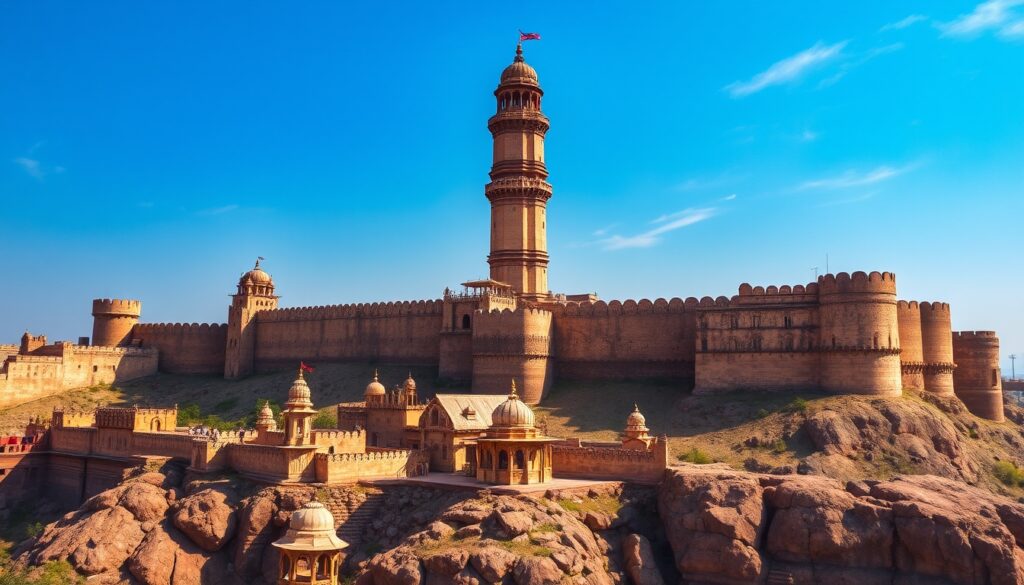
Distance: About 120 km from Udaipur and 80 km from Bundi.
How to Commute: You can take a train or bus. Additionally, auto-rickshaws are great for local travel!
Chittorgarh Fort embodies the valor and sacrifice of Rajput kings and queens. The fort complex features palaces, temples, and memorials. Visitors marvel at the Vijay Stambha (Victory Tower), built to commemorate Maharana Kumbha’s victory over the Mughals. The Rana Kumbha Palace and the Padmini Palace also captivate visitors, with Rani Padmini said to have performed Jauhar (self-immolation) here.
Cultural Significance
The fort symbolizes Rajputana pride and bravery, often depicted in folk songs and literature. Artists and historians frequently explore this rich heritage. The Meera Bai Temple, dedicated to the poet-saint Meera Bai, showcases the region’s deep devotional traditions. Broken idols scattered throughout the temples serve as a poignant reminder of the fort’s turbulent history, reflecting the sacrifices made by its inhabitants.
Historical Significance
A UNESCO World Heritage Site, Chittorgarh Fort served as the capital of the Mewar Kingdom. Its history features multiple sieges and heroic tales of its rulers and inhabitants. Padmini’s Jal Mahal, within the fort complex, adds allure to the legend of Rani Padmini.
Shopping Essentials
Discover beautiful fabrics, jewelry, and local art. Check out street vendors for better deals!
What to Pack
Pack sturdy shoes, a backpack with snacks, and sunscreen.
4. Ranakpur: Stunning Jain Temples
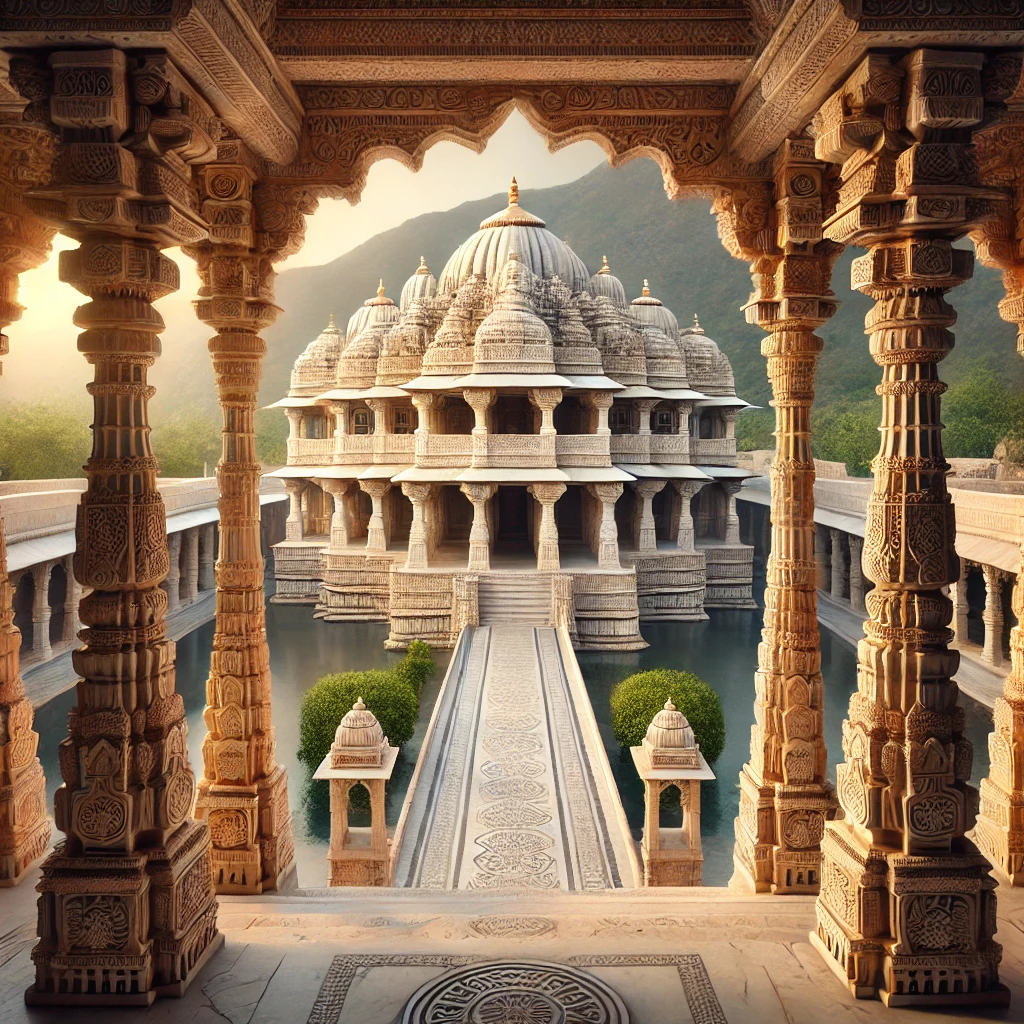
Distance: About 90 km from Udaipur and 50 km from Kumbhalgarh.
How to Commute: Taxis are the best option; the drive is scenic!
Ranakpur shines with its stunning Jain temple, dedicated to Tirthankara Adinatha. Visitors admire the intricate marble carvings of the Ranakpur Temple, boasting over 1,400 uniquely designed pillars. Nestled in a serene forested area, the temple offers a peaceful environment where people can reflect and appreciate the art.
Cultural Significance
Ranakpur serves as a significant pilgrimage site for Jains, reflecting rich Jain architectural heritage and spirituality. The site promotes Jain philosophy and ethics.
Historical Significance
Commissioned by businessman Dhanna Shah, the temple was built in the 15th century. It represents the golden age of Jain architecture in Rajasthan.
Shopping Essentials
Look for unique Jain art, crafts, and marble carvings. Street vendors often have great prices, so be sure to bargain!
What to Pack
Wear comfy clothes and shoes, and bring a sketchbook to capture the beauty.
5. Mount Abu: Rajasthan’s Hill Station
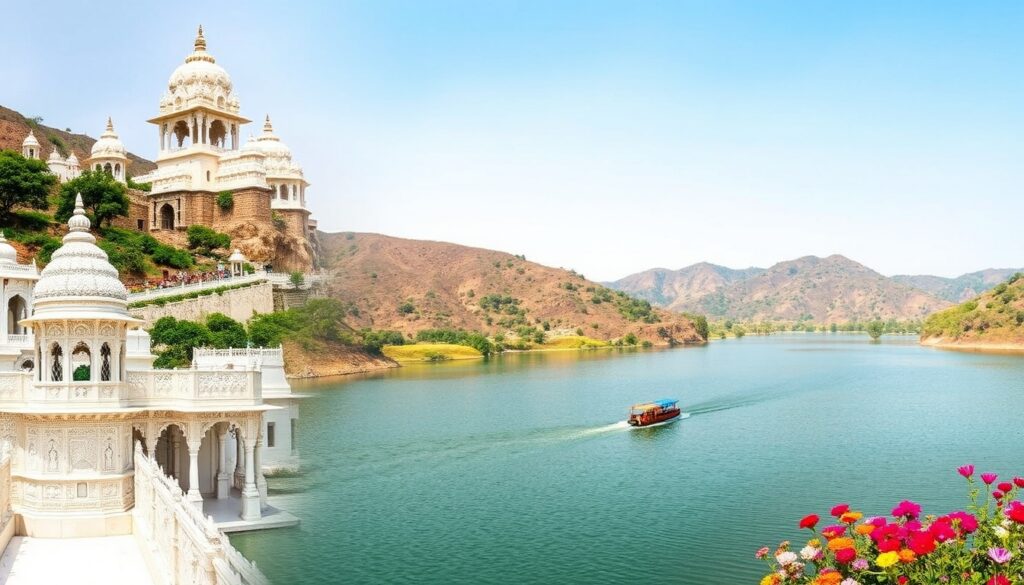
Distance: About 165 km from Udaipur and 190 km from Jaisamand Lake.
How to Commute: You can take a bus or taxi—easy and convenient!
Mount Abu charms visitors as a hill station, offering a refreshing escape from Rajasthan’s heat. The Dilwara Temples are famous for their exquisite marble work, drawing many visitors. Nakki Lake is ideal for boating and scenic strolls, surrounded by lush hills and gardens. The sunset point attracts crowds eager to witness stunning views of the sun setting over the hills.
Cultural Significance
Mount Abu acts as a melting pot of cultures. Hindus, Jains, and others coexist here. Annual fairs and festivals reflect this diversity, celebrating local traditions. The Brahma Kumaris Headquarters serves as a spiritual retreat and educational center, promoting teachings of peace and self-transformation. The Shaktipeeth, dedicated to Goddess Durga, also stands as a significant pilgrimage site where devotees seek blessings and spiritual solace.
Historical Significance
Mount Abu has served as a retreat for Rajput kings, with historical temples dating back to the 11th century showcasing architectural brilliance.
Shopping Essentials
Look for cozy woolen clothes, marble sculptures, and local crafts. Moreover, street stalls often have great finds, so enjoy bargaining while shopping!
What to Pack
Pack a light jacket, your camera, and a water bottle.
6. Jaisamand Lake: A Natural Wonder
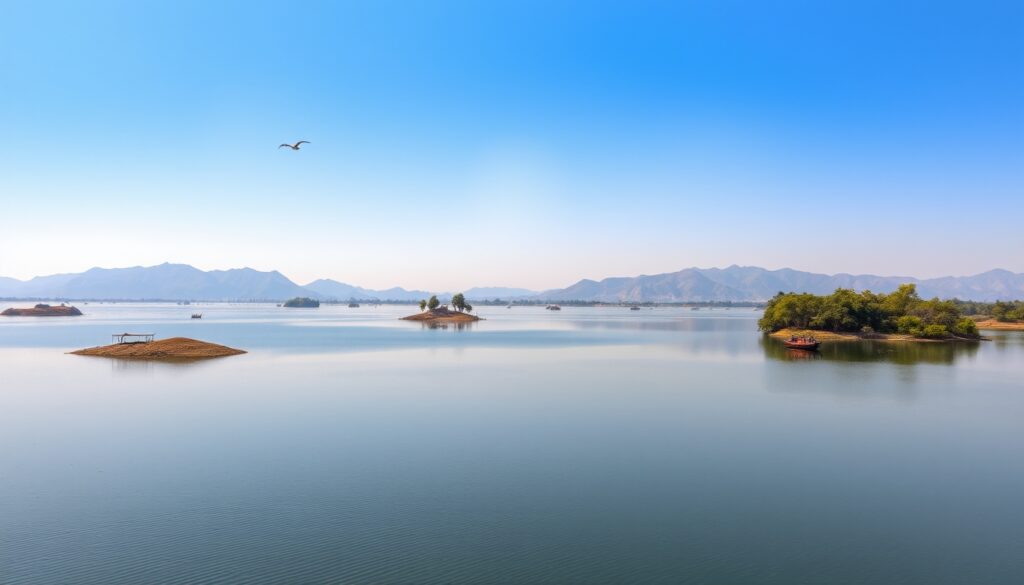
Distance: About 50 km from Udaipur.
How to Commute: Taxis are the best choice, or consider renting a car for a fun ride!
Jaisamand Lake, also known as Dhebar Lake, ranks as the second-largest artificial lake in Asia. Surrounded by hills, it features the Jaisamand Island Palace, which once served as a royal retreat. Visitors can enjoy boat rides and relax by the water while exploring the scenic surroundings, rich in wildlife and beauty.
Cultural Significance
The lake serves as an important site for local festivals and rituals, reflecting the community’s deep connection with nature and water bodies.
Historical Significance
Maharaja Jai Singh II built the lake in the 17th century to provide irrigation and water supply, symbolizing the engineering skills of the time.
Shopping Essentials
Look for crafts like woven items and jewelry—street markets offer excellent deals!
What to Pack
Don’t forget your swimwear for a refreshing dip, a towel, and snacks for a lakeside picnic!
7. Haldighati: A Historic Battlefield
Distance: About 45 km from Udaipur and 70 km from Kumbhalgarh.
How to Commute: Buses and taxis run regularly from Udaipur.
Haldighati stands as a historical site known for the fierce battle between Maharana Pratap and the Mughal army led by Akbar. The Haldighati Museum provides insights into this epic battle, showcasing the bravery of Rajput warriors. The stunning surrounding landscape features rugged hills and rich vegetation, enhancing the area’s historical significance.
Cultural Significance
Haldighati resonates in Rajasthani folklore, symbolizing Rajput honor and valor. Cultural performances and festivals commemorate legendary battles and heroes.
Historical Significance
The site of the 1576 battle, Haldighati highlights the fierce resistance of Rajputs against Mughal expansion, emphasizing Maharana Pratap’s significance in Indian history.
Shopping Essentials
Explore local handicrafts and memorabilia related to Maharana Pratap. Street markets often have unique items at lower prices!
What to Pack
Bring a sturdy hat, comfortable walking shoes, and plenty of water.
8. Bundi: A Hidden Gem
Distance: About 36 km from Chittorgarh and 200 km from Udaipur.
How to Commute: Trains and buses connect Bundi with major cities, making it easy to reach.
Bundi emerges as a hidden gem with a rich cultural heritage. The Taragarh Fort offers spectacular views of the city and showcases frescoes and intricate carvings. Architectural wonders like the Raniji ki Baori step wells highlight ancient water management systems. The blue-painted houses and narrow lanes create a charming, rustic atmosphere inviting exploration.
Cultural Significance
Bundi is celebrated for its traditional arts, including miniature painting and handicrafts. The city’s festivals, like Bundi Utsav, celebrate its rich cultural heritage.
Historical Significance
Once a princely state, Bundi has a history dating back to the 12th century. Its forts and palaces reflect the opulence of the Bundi royal family, showcasing their architectural advancements.
Shopping Essentials
Find unique miniature paintings, textiles, and pottery. Street vendors often offer similar products at lower prices!
What to Pack
Bring a camera, a journal for notes, and a light scarf for comfort.
9. Wildlife Sanctuaries: Nature’s Playground
Kumbhalgarh Wildlife Sanctuary
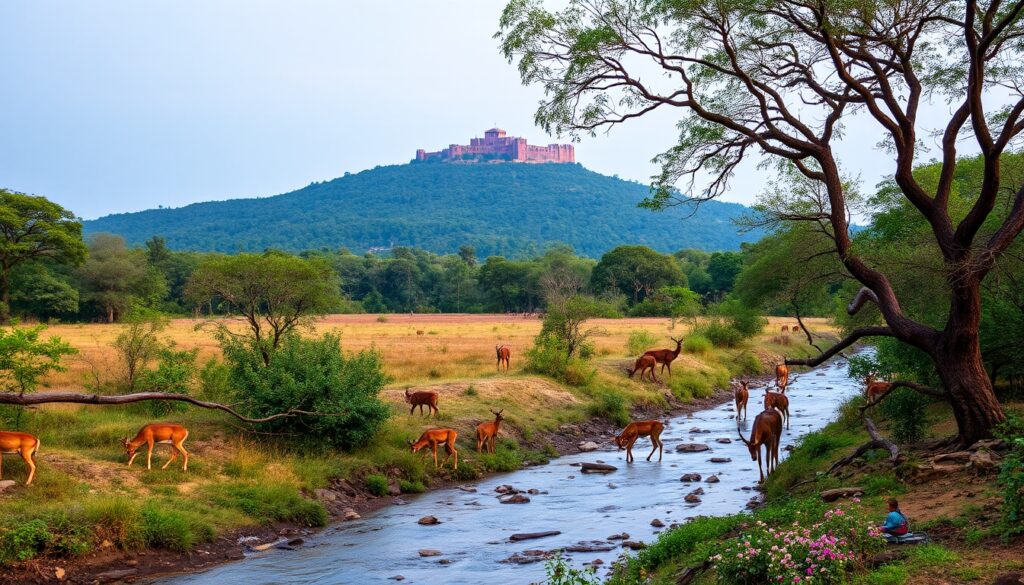
Distance: About 30 km from Kumbhalgarh Fort.
How to Commute: Buses and taxis are readily available.
This sanctuary shelters a variety of flora and fauna, including leopards, hyenas, and various bird species. Rugged hills and dense forests create an excellent spot for nature lovers, making it a popular destination for wildlife enthusiasts.
Cultural Significance: The sanctuary forms part of the local cultural identity. Communities rely on its resources for traditional practices.
Historical Significance: The area around Kumbhalgarh has deep historical ties to the fort and its rulers, emphasizing the connection between nature and heritage.
Ranthambore National Park
Distance: About 130 km from Udaipur.
How to Commute: You can reach the park via train or taxi.
Although slightly outside Southern Rajasthan, this park is famous for its tiger population. Ruins of ancient forts dot the landscape, providing prime locations for wildlife photography. Jeep safaris offer thrilling opportunities to spot tigers, leopards, and many other animals in their natural habitat.
Cultural Significance: The park plays a crucial role in wildlife conservation efforts, promoting eco-tourism that attracts nature lovers and researchers.
Historical Significance: The park is home to the historic Ranthambore Fort, a UNESCO World Heritage Site that has witnessed the rise and fall of many dynasties, linking nature with rich historical narratives.
Shopping Essentials
Pick up nature-inspired souvenirs, local crafts, and wildlife-themed products. Street markets often offer the best prices!
What to Pack
Bring binoculars, a camera, and sturdy hiking shoes for exploring.
Your Adventure Awaits in Southern Rajasthan
In conclusion, Southern Rajasthan offers a treasure trove of experiences. From the stunning lakes of Udaipur to the historic forts of Chittorgarh, each destination is full of beauty and adventure. As you explore, you will encounter vibrant culture, delicious food, and friendly people. So pack your bags and get ready for an unforgettable journey through this incredible region!
Check out our article for Northern Rajasthan